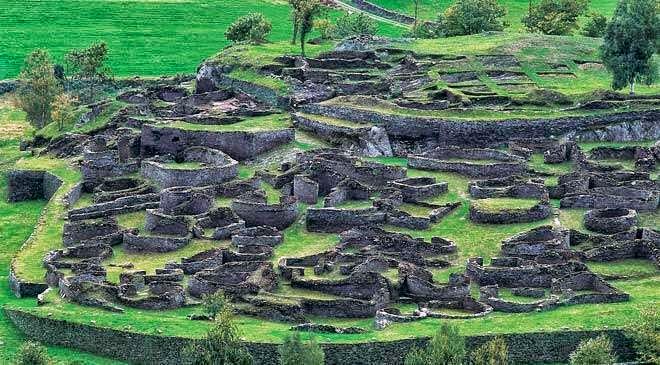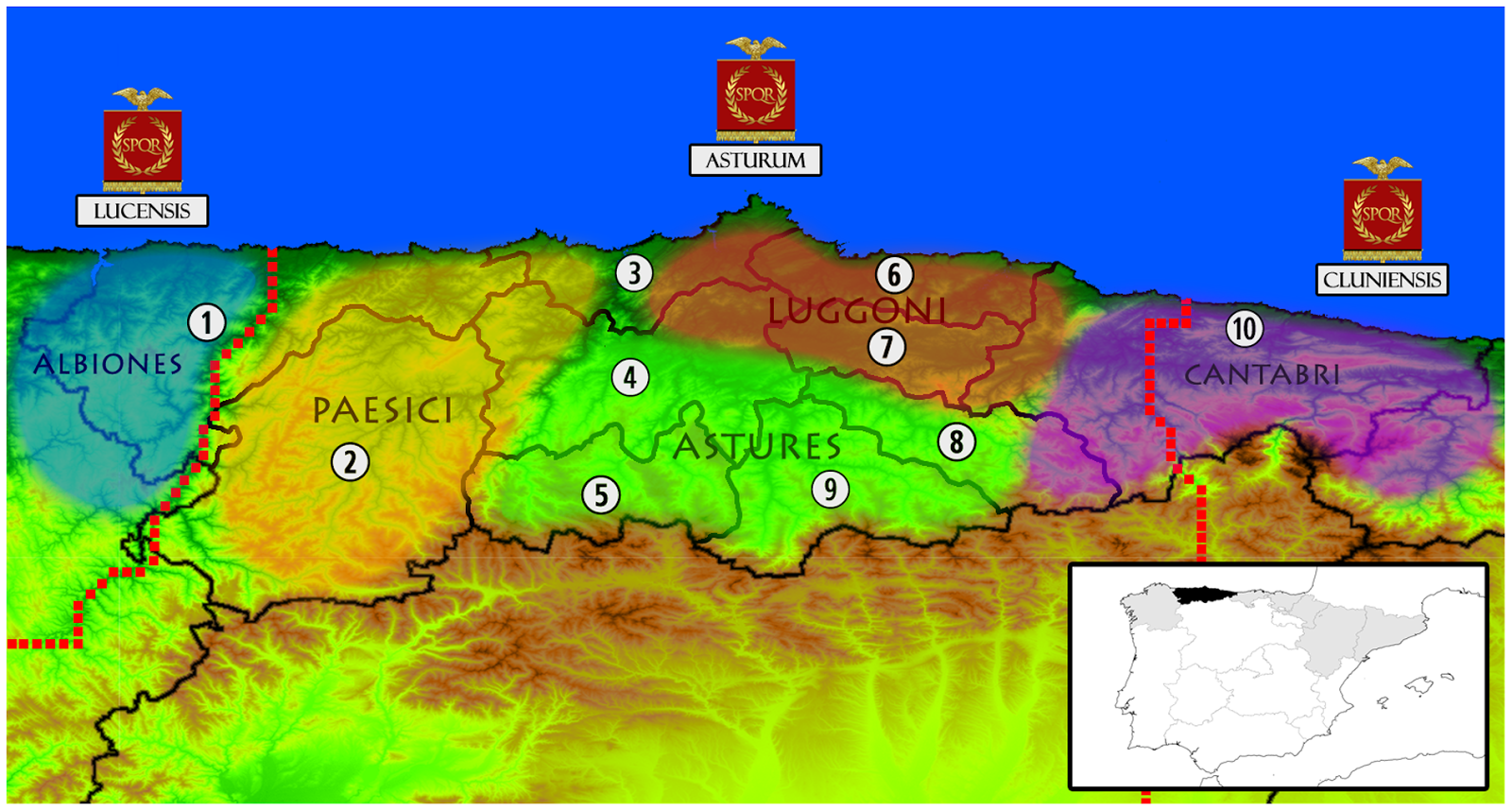The DNA of the people of Asturias still maintains the genetic prints of remote ages. A research conducted at the University of Oviedo proves that the old frontiers marked by the pre-Roman Astur settlements have left their mark on the DNA of current populations. The analyses conducted in 61 Asturian councils have allowed the researchers to detect a clear genetic structuring in Asturias that is different from the one that characterizes other regions of the Peninsula. In this region, we can also see the presence of different genetic lineages in the Oriental and Occidental ends, whose populations show traces of a genetic difference between themselves and with the populations of the central areas.
Image of a popular pilgrimage held near Oviedo in the early twentieth century
[Credit: Fernando de la Puente]
The reason behind this genetic differentiation is found on the barriers of the steep Asturian orography. The Sella and Navia rivers mark purely-geographical territorial limits, but they are reinforced by a socio-political barrier that makes their flow coincide with the existing Astur tribes that populated those areas in pre-Roman times. The research conducted by Doctor Antonio Fernandez Pardina took place at the Department of Biology of Organisms and Systems and was directed by Belen Lopez Martinez and Eva Garcia Vazquez. The conclusions obtained have been recently presented as part of the defense of the PhD Thesis that comprises the whole research conducted at the area of Physical Anthropology.
Map of the current territorial division of Asturias, coupled with the political state in the time of the Roman Empire: Numbers and internal lines indicate the regions from which samples were collected in the present study (1: EoNavia; 2: Narcea; 3: Aviles; 4: Central Oviedo; 5: Southern Oviedo; 6: Gijon; 7: Eastern Oviedo; 8: Nalon; 9: Caudal; 10: Oriente). Coloured bubbles represent the known extension of the most important pre-Roman tribes, according to archaeological, historical and epigraphic sources (see text). Names under imperial vexilla represent the Roman subprovincial division (“conventus iuridicus”), with its precise borders marked with a red dotted line. Also, a small political map of Iberia is shown in the lower right. Asturias is shaded in black while other communities on the northern third of the Peninsula are shaded in gray [Credit: PLoS One/doi:10.1371/journal.pone.0050206.g001]
The field work involved the compilation of a total of 486 samples taken in 61 Asturian councils from individuals whose grandparents had lived in the same geographical area. The genetic tests performed involved the sequencing of the mitochondrial DNA (a genetic marker transmitted by the mother) of 429 of these people and 192 genetic analyses of the Y chromosome (genetic marker transmitted by the father). The Asturian sample was included in a database of more than 9,500 references coming from other populations of Europe and Northern Africa in order to find geographical patterns in a local, a regional and a European scale. The tendencies detected in this statistical comparison allow researchers to related the ancient population of Asturias to that of other regions of the so-called Frank-Cantabrian zone.

Coana fort (Navia Historical Park), an iron-age settlement in the area of Asturias
[Credit: © Turespana]
The data obtained by sequencing the mitochondrial DNA and the Y chromose reveal an almost-complete coincidence of both genetic markers, which suggests an ancient origin of the Asturian sub-populations, based on groups of families relatively isolated from each other and with a similar mobility for both sexes. The discoveries made by this PhD Thesis on the physical anthropology of the Asturian people have been published by PLoS ONE.
Author: Blanca Gutierrez
Source: Universidad de Oviedo via CORDIS [April 14, 2014]
Read more at: http://archaeologynewsnetwork.blogspot.it/2014/04/research-traces-genetic-print-of-spains.html?utm_source=feedburner&utm_medium=feed&utm_campaign=Feed:+TheArchaeologyNewsNetwork+(The+Archaeology+News+Network)#.U0_-i1V_uSo
Follow us: @ArchaeoNewsNet on Twitter | groups/thearchaeologynewsnetwork/ on Facebook

